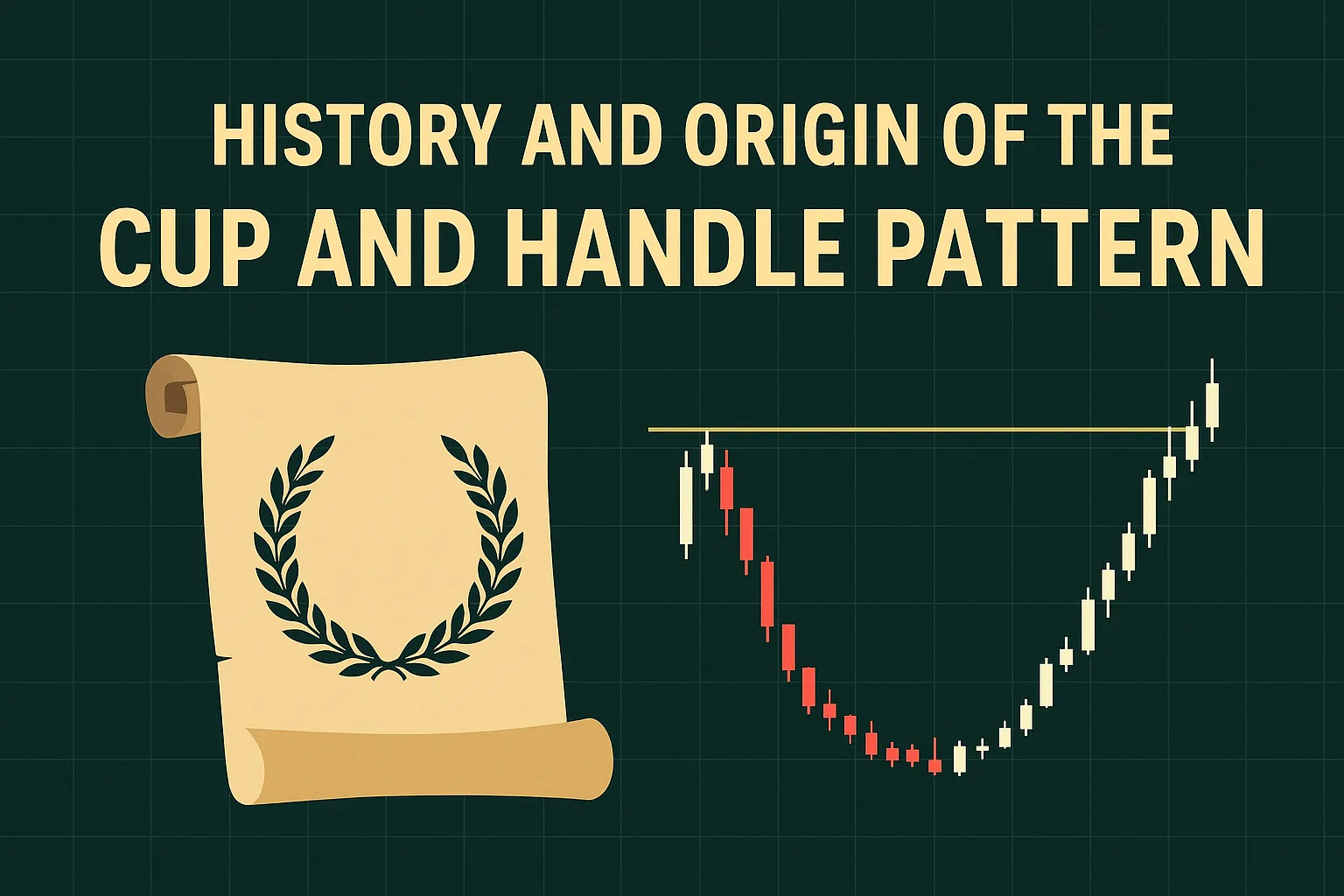
Introduction
The cup and handle pattern is a cornerstone of technical analysis, prized for its ability to predict bullish price movements. But where did this pattern come from, and who brought it to prominence? Understanding the history and origin of the cup and handle pattern provides valuable context for traders, shedding light on its development and enduring relevance in markets like stocks, forex, and cryptocurrencies. This guide traces the pattern’s roots, its introduction by William J. O’Neil, and its evolution as a trading tool.
The Birth of the Cup and Handle Pattern
The cup and handle pattern was first formalized by William J. O’Neil, a renowned stock market investor and founder of Investor’s Business Daily. O’Neil introduced the pattern in his seminal 1988 book, How to Make Money in Stocks: A Winning System in Good Times or Bad. His work aimed to identify high-growth stocks with strong potential for price appreciation, and the cup and handle pattern became a key component of his CAN SLIM investment strategy.
O’Neil observed that many successful stocks exhibited a distinct chart pattern before significant price breakouts. He described this formation as resembling a teacup with a handle, characterized by a U-shaped consolidation (the cup) followed by a short pullback (the handle). By studying historical stock charts, O’Neil noted that this pattern often preceded substantial upward moves, making it a reliable indicator for traders.
William O’Neil and the CAN SLIM Strategy
The cup and handle pattern gained prominence as part of O’Neil’s CAN SLIM system, a methodology combining fundamental and technical analysis. CAN SLIM stands for:
- C: Current quarterly earnings growth
- A: Annual earnings growth
- N: New products, management, or highs
- S: Supply and demand
- L: Leader or laggard
- I: Institutional sponsorship
- M: Market direction
Within this framework, the cup and handle pattern serves as a technical signal to time entries in fundamentally strong stocks. O’Neil emphasized that the pattern’s reliability increases when it forms in leading stocks during favorable market conditions, supported by high earnings growth and institutional buying.
Evolution and Adoption
Since its introduction, the cup and handle pattern has transcended its origins in stock trading to become a versatile tool across various markets:
- Stock Markets: O’Neil’s initial focus was on U.S. equities, particularly growth stocks. The pattern remains a staple for stock traders using platforms like TradingView or Thinkorswim.
- Forex and Commodities: Traders adapted the pattern to currency pairs and commodities, recognizing its applicability in any market with sufficient liquidity and trending behavior.
- Cryptocurrencies: With the rise of crypto trading, the pattern has been used to identify breakouts in assets like Bitcoin and Ethereum, despite their volatility.
The pattern’s popularity grew with the advent of charting software in the 1990s and 2000s, which made it easier to identify on daily, weekly, or even intraday charts. Today, it’s taught in trading courses, discussed in forums, and featured in technical analysis books, cementing its status as a classic chart pattern.
Why the Pattern Endures
The cup and handle pattern’s longevity can be attributed to several factors:
- Simplicity: Its visual clarity makes it accessible to traders of all levels.
- Reliability: When properly identified, it often precedes significant price moves, especially in bullish markets.
- Adaptability: It works across time frames (from minutes to months) and asset classes.
- Market Psychology: The pattern reflects universal behaviors like accumulation and consolidation, which persist across markets.
However, traders must use it with caution, as false breakouts or bearish variations (e.g., the reverse cup and handle) can occur, requiring confirmation with volume and other indicators.
Impact on Modern Trading
The cup and handle pattern has influenced modern trading strategies, particularly in swing and position trading. It’s often combined with tools like moving averages, RSI, or Fibonacci retracements to enhance accuracy. O’Neil’s emphasis on combining technical patterns with fundamental strength also inspired a generation of traders to adopt a hybrid approach, balancing chart analysis with company performance.
Tips for Traders
- Study O’Neil’s Work: Read How to Make Money in Stocks to understand the pattern’s role in the CAN SLIM system.
- Analyze Historical Charts: Practice identifying the pattern in past stock or crypto charts to build familiarity.
- Combine with Fundamentals: For stocks, check earnings growth and institutional support to align with O’Neil’s criteria.
- Stay Updated: Follow market trends, as the pattern’s effectiveness can vary in bullish vs. bearish environments.
FAQ
Q: Who invented the cup and handle pattern?
A: William J. O’Neil introduced the cup and handle pattern in his 1988 book, How to Make Money in Stocks.Q: Is the cup and handle pattern still relevant today?
A: Yes, it remains a reliable tool across stocks, forex, and crypto, especially when confirmed with volume and indicators.Q: What is the CAN SLIM strategy, and how does it relate to the pattern?
A: CAN SLIM is O’Neil’s investment system combining fundamental and technical analysis. The cup and handle is a key technical signal within it.Q: Can the cup and handle pattern be used in cryptocurrencies?
A: Yes, it’s widely used in crypto trading, though volatility requires careful confirmation with volume and trends.Q: Why is the cup and handle pattern effective?
A: It reflects market psychology, capturing accumulation and consolidation phases that often precede bullish breakouts.
Conclusion
The cup and handle pattern, introduced by William J. O’Neil in 1988, has become a timeless tool in technical analysis. Rooted in the CAN SLIM strategy, its origins in stock trading have expanded to forex, crypto, and beyond, thanks to its simplicity and reliability. By understanding its history and evolution, traders can appreciate its enduring value and apply it effectively. Explore more about the cup and handle pattern at https://cupandhandlepattern.com/ to enhance your trading skills.





Leave a Reply